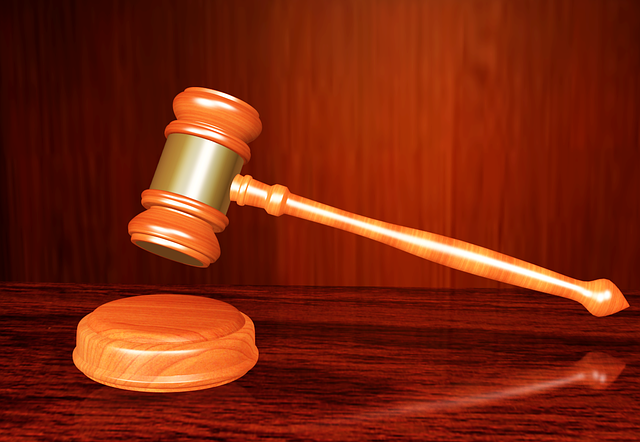Fraudulent financial practices like embezzlement and stock manipulation pose significant risks to individuals and economies. Early recognition is crucial, with red flags including sudden changes in financial patterns and evasive behavior. Proactive vigilance involves reviewing statements, consulting legal experts, and reporting irregularities to authorities. The intricate legal landscape surrounding personal injury lawsuits related to fraud protects individuals through a structured process that begins with filing a claim, serving a notice of claim, and potentially leading to arbitration or trial. This process not only seeks justice for victims but also holds wrongdoers accountable, addressing white-collar crimes and upholding economic integrity.
“Uncovering and understanding fraudulent financial practices is crucial in today’s digital era. This comprehensive guide delves into the intricate world of financial fraud, offering insights on its various forms and signs to watch for.
We explore the legal avenues available for victims, specifically focusing on personal injury lawsuits related to fraud. Our article provides a detailed step-by-step guide through the process, ensuring you are equipped with knowledge to navigate these complex matters.”
- Understanding Fraudulent Financial Practices: Definition and Examples
- Identifying Signs of Fraud in Financial Transactions
- The Legal Framework for Personal Injury Lawsuits Related to Fraud
- Steps Involved in a Personal Injury Lawsuit Process: A Comprehensive Guide
Understanding Fraudulent Financial Practices: Definition and Examples

Fraudulent financial practices refer to a range of illegal activities designed to deprive individuals or entities of monetary value through deception. These practices encompass various schemes, from white-collar and economic crimes like embezzlement, money laundering, and falsifying financial statements, to more complex manipulations in the stock market or insurance fraud. Understanding these practices is crucial as they can have severe economic impacts on both individuals and the broader economy.
An example of fraudulent financial practices could be a corporate executive manipulating financial reports to artificially inflate company profits, leading investors to make irrational decisions. Another instance is identity theft, where criminals use personal information to open fraudulent accounts or gain unauthorized access to bank accounts. These crimes often involve sophisticated techniques and can go undetected for extended periods, making them a significant concern in today’s interconnected financial world. The steps in a personal injury lawsuit process, while unrelated, have an unprecedented track record of holding wrongdoers accountable, including those involved in economic crimes, through jury trials that ensure justice is served.
Identifying Signs of Fraud in Financial Transactions

Recognizing fraudulent financial practices early is crucial to mitigating potential losses. While white-collar and economic crimes can be subtle, there are several red flags that may indicate illicit activities. For instance, unexpected changes in financial patterns, such as sudden large withdrawals or unusual transaction volumes, should trigger a closer look. Additionally, discrepancies between bank statements and records kept by the individual or business involved can be an early warning sign. If someone is unable to provide clear explanations for their financial dealings or exhibits a pattern of evasive behavior when discussing money, it may suggest underlying fraud.
If you suspect fraudulent activities, taking prompt action is essential. This could involve reviewing financial statements meticulously, seeking professional advice from a general criminal defense attorney, and reporting any irregularities to the appropriate authorities. By being vigilant and proactive, individuals can protect themselves and their assets from the devastating impacts of white-collar crimes, ensuring justice for his clients and upholding the integrity of economic systems.
The Legal Framework for Personal Injury Lawsuits Related to Fraud

The legal landscape surrounding personal injury lawsuits related to fraudulent financial practices is intricate and designed to protect individuals from harm. When a person suffers injuries due to another’s deceptive or illegal financial actions, they have the right to seek justice and compensation through the court system. The process, often complex, involves several crucial steps that must be followed meticulously.
These cases, considered high-stakes, require a comprehensive understanding of not only personal injury law but also financial regulations. Plaintiffs must gather substantial evidence to establish the defendant’s liability, demonstrating intentional deception or negligence that led to their harm. Across the country, successful outcomes in such lawsuits have been achieved through strategic navigation of the legal process, including meticulous document collection, expert witness testimony, and robust legal arguments. Winning challenging defense verdicts in these cases necessitates a deep understanding of both the financial industry and the intricacies of personal injury law.
Steps Involved in a Personal Injury Lawsuit Process: A Comprehensive Guide

The steps in a personal injury lawsuit process involve several key phases designed to ensure justice for those harmed by negligence or intentional acts. It begins with filing a claim, where affected individuals or their representatives document the incident and its impacts. This includes gathering evidence like medical reports, witness statements, and any relevant documentation.
Next, a notice of claim is served upon the defendant, providing them with an official warning and outlining the allegations. Defendants then have a set period to respond, either accepting liability or disputing it. If agreement isn’t reached, the case progresses to arbitration or trial, where both parties present their cases before a judge or jury. This process aims to resolve disputes in a structured manner, offering compensation for damages suffered by corporate and individual clients alike, while addressing potential white collar and economic crimes within the broader framework of general criminal defense.
Fraudulent financial practices pose significant risks, causing considerable harm and loss. Understanding these practices, their indicators, and the legal framework behind them is crucial for both individuals and businesses. By recognizing signs of fraud early, one can navigate the complex landscape of personal injury lawsuits effectively. This article has provided a comprehensive guide through the steps in a personal injury lawsuit process, empowering readers to protect themselves and seek justice. Remember that each case is unique, so consulting legal professionals specializing in financial fraud cases is essential for the best outcomes.






